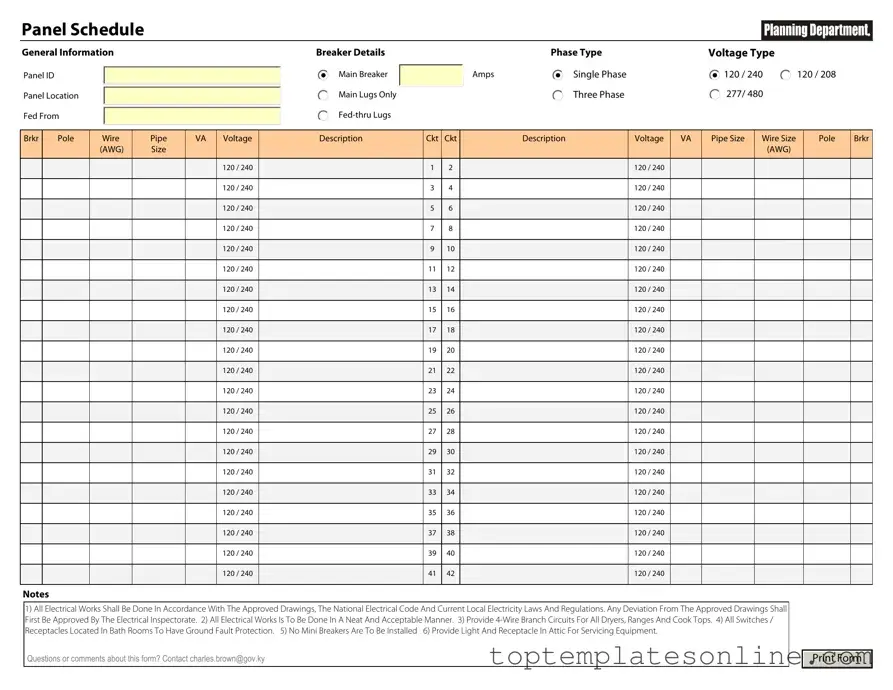The Electrical Panel Schedule form plays a crucial role in the organization and management of electrical systems within residential, commercial, and industrial buildings. This document provides a comprehensive overview of the electrical panel, detailing the circuits, their corresponding breakers, and the loads they serve. By listing each circuit along with its amperage rating, this form helps ensure that the electrical system operates safely and efficiently. Additionally, the schedule often includes information about the location of circuits, the type of equipment connected, and any specific notes related to maintenance or safety. Properly filling out this form is essential for compliance with local codes and regulations, as well as for facilitating future upgrades or repairs. An accurate Electrical Panel Schedule not only aids electricians and contractors in their work but also serves as a valuable reference for property owners and facility managers, promoting better understanding and management of electrical resources.
